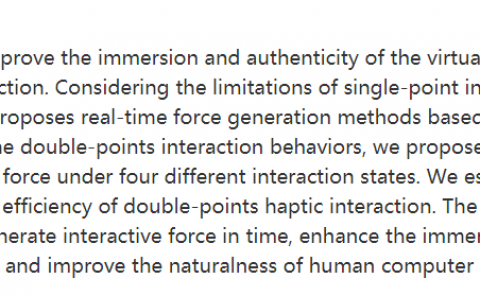Hand redirection is a technique used in virtual reality (VR) to alter the virtual hand position from the real hand position, enabling extended interaction in VR. This technique capitalizes on the visual system’s dominance over proprioception, whereby discrepancies between the virtual hand mapping and the reality below a specific threshold are indiscernible to users. However, these detection thresholds are often minute. In this study, we explore the impact of haptic stimuli known as the ‘hanger reflex’ on the detection threshold of hand redirection, specifically concerning forearm pronation, which involves rotating the user’s palm downward. To achieve this, we conducted a user study that involved manipulating the degree of forearm rotation and measuring detection thresholds in three conditions: Neutral, where no force was applied; Inward, where haptic feedback was provided to match the direction of hand rotation through the hanger reflex; and Outward, where haptic feedback was provided in the opposite direction of hand rotation. The results demonstrate that, in the Neutral condition, the virtual degree of rotation can vary between 0.896 and 1.136 times the actual amount without being perceptible to users. However, under the Inward condition, this range increases to between 0.888 and 1.204 times the actual amount, representing a significant expansion of the detection threshold range. Consequently, our findings contribute to the field of upper limb rehabilitation.



